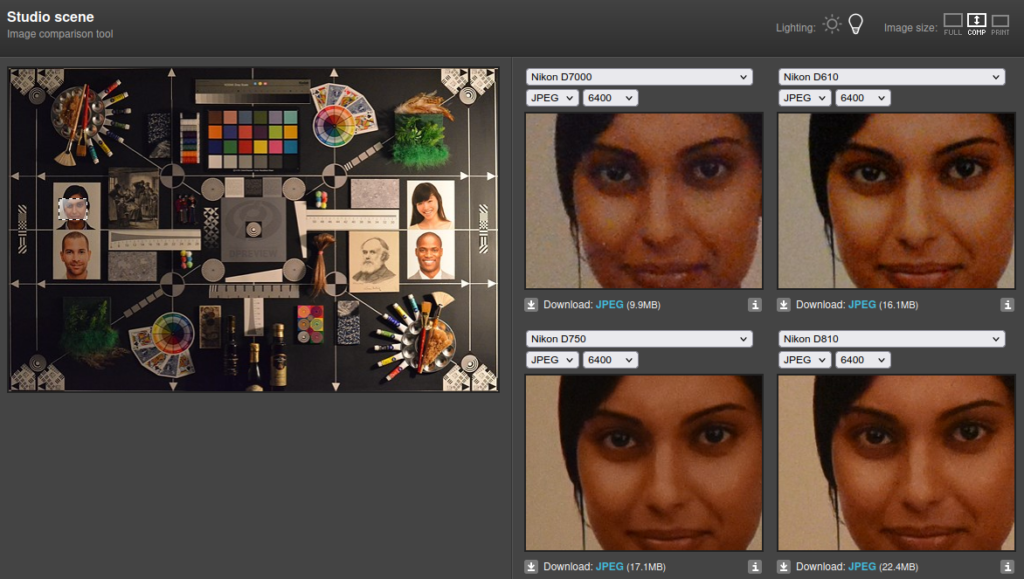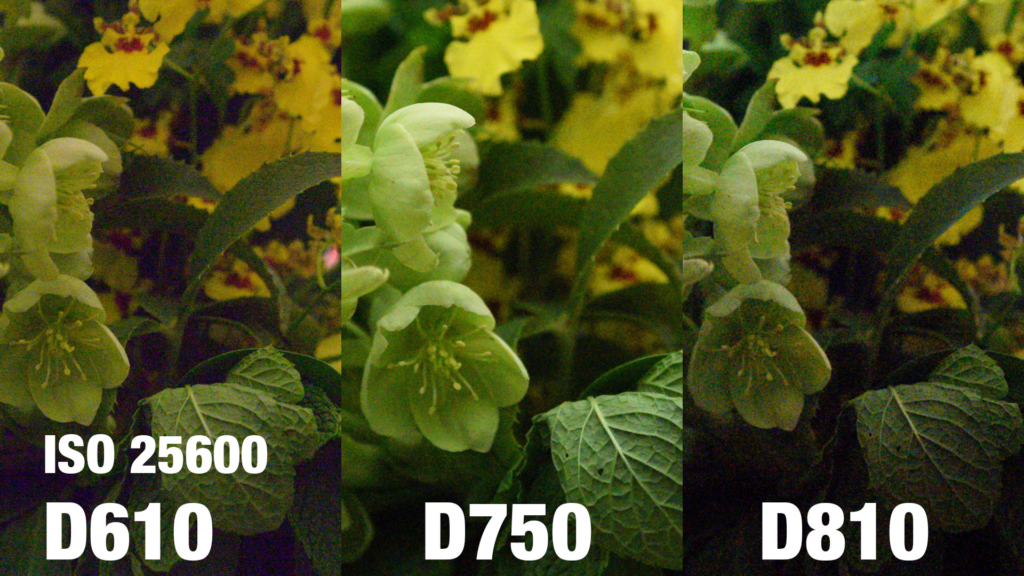I’ve always shot about a decade-old camera bodies, since only that can I afford. First a then-9-year old Nikon D90, then I’ve upgraded to currently 12 years old D7000 purely to get better low-light, resp. higher-ISO performance. But recently on a Christmas indoor shoot, my DSLR was outshoot at ISO6400 by some darn chinese smartphone! Okay, time to go full-frame, bigger sensor and superb sensor individual pixel size. Nikon D610 was eliminated soon, and only the 9-year old D750 and D810 remained. But which will be better for me?
The use-case defines the requirements and cost:benefit ratio
My use-case is:
- Late-hours interior people snapshots of family events, often in the evening,
- Cityscape photos done either on my way to/from work (i.e. evening) or at night,
- Occasional museums, transportation (trains/planes), airshows and landscapes over weekend.
Hence, low-light, higher-iso performance is somewhat of dominant importance.
Pixel density and pixel size of a sensor still does make a high-ISO difference
D750 is the undisputable winner in low-light and high-ISO noise – no surprise, since the D810 pixel size is almost the same as my DX D7000 pixel size, given the too large resolution!


And indeed, side-by-side DX/FX testing of D7000 vs. D810 by the DP review has confirmed about the same ISO individual pixel performance. On the other hand, the D750 is optimized for low-light and hence has almost 50 % larger pixel area!

Now, there appeared a plethora of debunking articles on how lower pixel density is supposedly not needed for less noise, eg. here very categorical “Why Lower Resolution Sensors Are Not Actually Better in Low Light” on Petapixel. But the more objective of these actually admit that lower pixel density does yield better results – “for extreme ISOs, larger pixel size returns less noise.” And this is an undeniable fact verified by side-by-side photos of noise (RAW doesn’t run the Nikon’s on-board noise correction algorithms):

The overall argument of the “pixel size doesn’t matter” crowd goes through the lines that “even though smaller pixels generate more noise, they also make larger resolution photos, so the noise is equal when downsized to the same size.” Unfortunately, the 32MPx D810’s excess noise doesn’t come to the same level even when resized to D750’s 24MPx:

But these are really extreme examples, with ISO 25600.
But what exactly is the ISO level where the smaller pixel area’s noise becomes unbearable?
The D810, with low-pass filter removed and higher resolution, does bring indisputably better sharpness than the D750. And I like sharpness. Plus it would be possible to crop it, thus compensating for the focal length of my tele-lens when snapping photos of airplanes.
So where exactly is the ISO setting where the “pixel size debunkers’s” claim of downsampled higher resolution being equal to the bigger pixels still applies, and where it fails?
Fortunately, there are a lot of low-light, high-ISO performance test of D750 versus the D810 on the internet.
The site dpreview.com has an amazing comparison tool which can be set to low-light and images resampled to a common resolution. Already at ISO 6400, it’s almost shocking how unusable my current DX-format D7000 is in comparison to the newer full-frames (and also how the FX D610 is falling behind the next-gen sensors):

The difference between native D750 and resampled-down D810 is interesting. Already at ISO6400, the D810 has noticeably more noise… But nevertheless, better sharpness. And it is true that the noise disappears when you downsize enough, for which there is plenty of space within the insane 6720×3776 px resolution.
Let’s see a different source. Matt Granger has done an influential testing of D750 vs. D810:


The extreme amount of noise observed on D810 photos by Matt on a 100% crop is really shocking, worse than even the old D610! But Matt has observed unexpected amount of noise even on ISO6400 already:

So maybe let’s try yet another source. Photographylife’s Nasim Mansurov has done controlled comparison photos of D750 versus D810 and the old D610 in a difficult environment. Cropping just most notable parts, it’s astonishing how much noise there is on the fixed-color DVD covers even on relatively low ISO sensitivity, like ISO 3200 (I shot most of my photos between ISO 1600 and 3200 in interiors):


By ISO 6400, the D810 has really unexpectedly high noise, both in shadows and on color – but the D750 is actually only better in shadows, while on color, the down-sampling of the D8100 larger resolution actually decreases the noise size and annoyance factor:


My maximal high-ISO target would be ISO 12800. That is where D750 is still quite okay, but the D810 is struggling a bit too much, with noise in the shadows becoming clearly visible even with serious downsizing or thumbnails:


And then in the absurd ISO 25600, the D810 is K.O., but the D750 also loses a lot of quality:


To top it off, there was a dedicated night-shooting D750 vs. D810 shoot-off by Joshua Cripps, with ISO 25600, and D750 a clear winner:

Nikon’s on-board noise-reduction matters for no postprocessing
I don’t shoot RAW and post-process on PC – simply because I have no time for that. I have kids, wife and full-time work to do!
That means that the representative shots are those in JPEG with Nikon’s noise reduction active. And there, the noise in the DPreview camera comparison tool isn’t nearly as horrid – the downsampling from 32 to 24 MPx hides a lot and still preserves details:



Again, this heavily depends on the viewing screen resolution. If I view it on my Dell E4200’s 10-inch 1200×800 display, the difference feels negligible. If i view it on my work 1920×1080 Dell P2422 display, the D8100 shots start to look awful. Look for yourself here.
Can enough downsampling save the D810?
I’m not a “pixel peeper” how Ken Rockwell calls them, and I grew up on low-resolution everything. The noise in the pictures above starts to slowly disappear when downsized to 50 % of the original. The texture of faces would be distorted beyond recognition in the ISO 25600 – but that is extreme. With enough downsampling, even D810 with ISO 12800 may be usable, and ISO 6400 should?
Will I really need the high ISOs after going from DX to FX?
The thing about going to full-frame is that the sensor is overall bigger and receives overall more light. Which means that with the same aperture and shutter, it receives more light and hence needs lower ISO!
That’s why I was always angrily asking how comes all the other photographers can afford such low ISO with such huge aperture and short shutter times – they were shooting full-frame.
That means that where I have needed ISO 6400 with my DX D7000, I would actually need notably less on full-frame. Does that mean that the only ISO performance which should be of concern for me in full-frames is the ISO 6400 and maybe 12800?
Winner – none. It’s a tie…
I am split. If I had a good offer on a used D750, I would probably take it. But instead, I have a good offer on a used D810. Or I can save 1/3 of the cost and buy a D610, which is also full-frame and has about the noise performance of the D810…

Leave a Reply
You must be logged in to post a comment.